Dana Biosphere Reserve
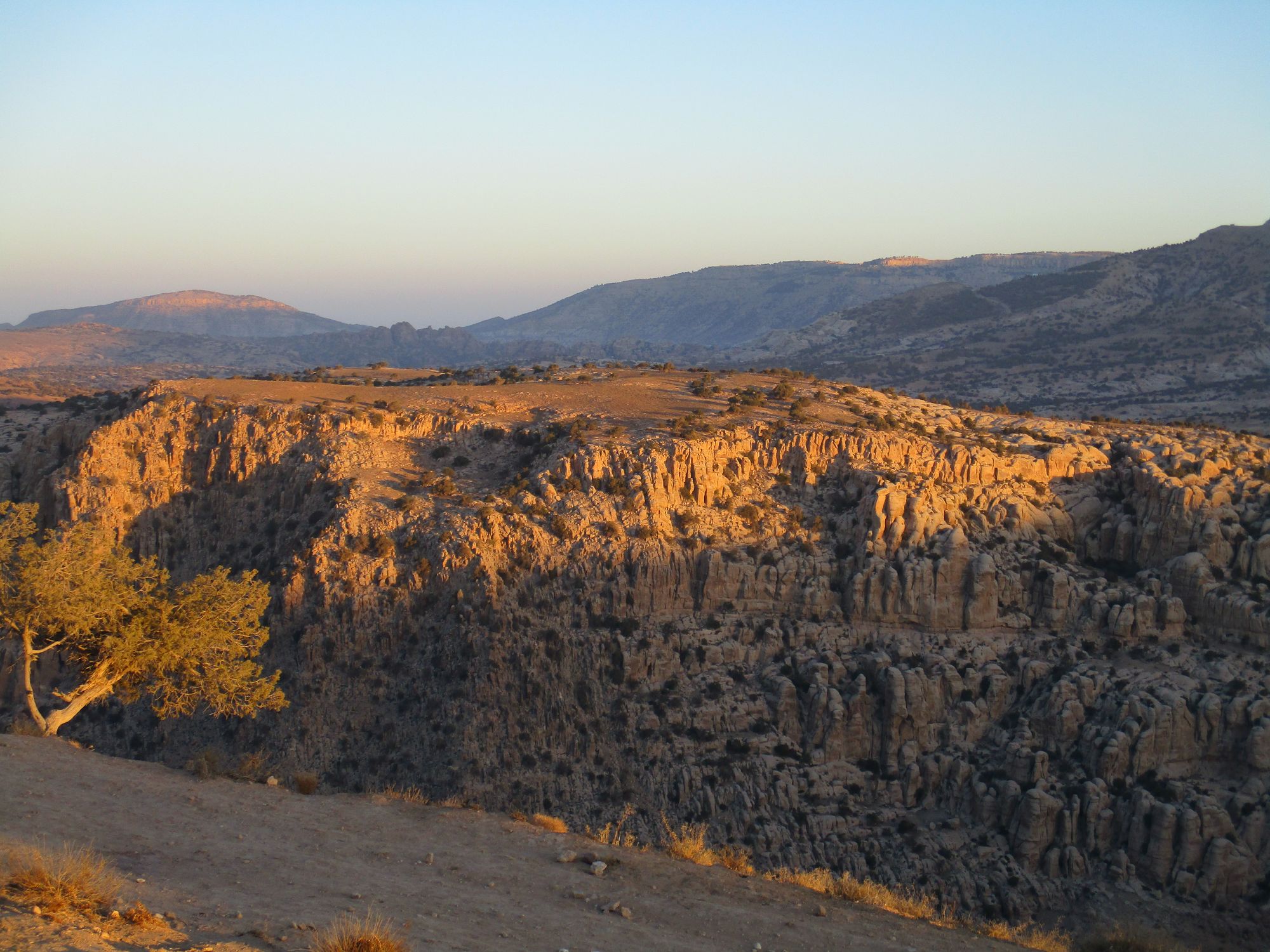
Located among the plateaus, peaks, and canyons in the Abarim Mountains, Dana Reserve is unique among many unique places in Jordan.
We recently spent a week in the reserve. It was truly breathtaking. Merely reading about a location in a book or the Bible is like a washed-out, black-and-white photograph compared to a 3-D technicolor view of actually walking on the terrain.
I’ll lay the foundation to help you understand the geography of Jordan to get a true picture of how these mountains and locations like Dana Reserve may figure into places of refuge in the end of days.
I have written many times of the key verse revealing to us that for some reason Jordan will be a place where the antichrist cannot enter while he is sweeping through country after country.
"And at the end-time, the king of the south shall butt at him [Antichrist]. And the king of the north shall come against him like a tempest, with chariots and with horsemen and with many ships.
"And he shall enter into the countries and shall overflow and pass over. He shall also enter into the glorious land [Israel], and many shall be stumbled. But these shall escape out of his hand: Edom and Moab, and the chief of the sons of Ammon [parts of modern-day Jordan].
"And he shall stretch out his hand on the lands. And the land of Egypt shall not escape." Daniel 11:40-42 (MKJV)
The ancient biblical nations of Edom, Moab, and Ammon lie mostly along the Abarim Mountains, stretching from Mt. Nebo, where Yehovah allowed Moses to view the Promised Land, down to the Arabian Desert in the northwest corner of Saudi Arabia. We can see the mountains from our courtyard, backing up to our apartment building.
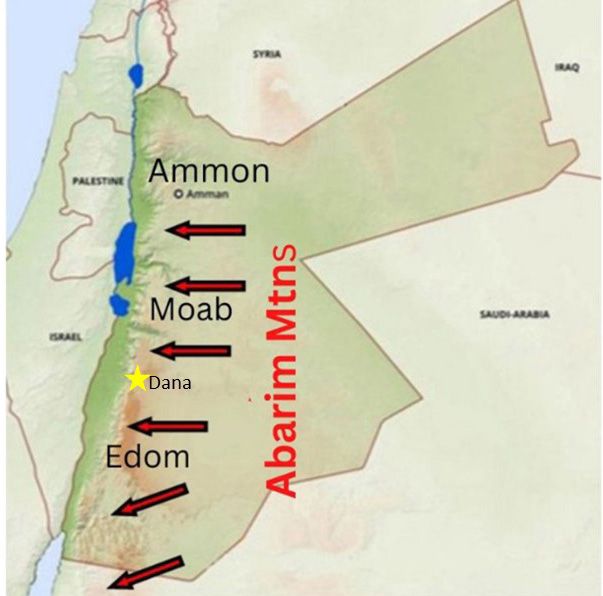
The modern name for this area is the Jordanian Highlands. The Kings Highway, which today runs from near Irbid in the north to Petra in the south, is over 5,000 years old. Abraham used it in his journey to the land Yehovah promised him. Trade caravans, the Nabateans, and Romans, all traveled along this ancient road that ran from Heliopolis, Egypt, eastward across the Sinai Peninsula to Eilat and Aqaba. It turned north there past Petra and Shaubak (Shobak), Rabbah, Madaba, Amman (biblical Philadelphia), and Damascus, ending at Resafa on the upper Euphrates.[1] See the red road marked on the map below.
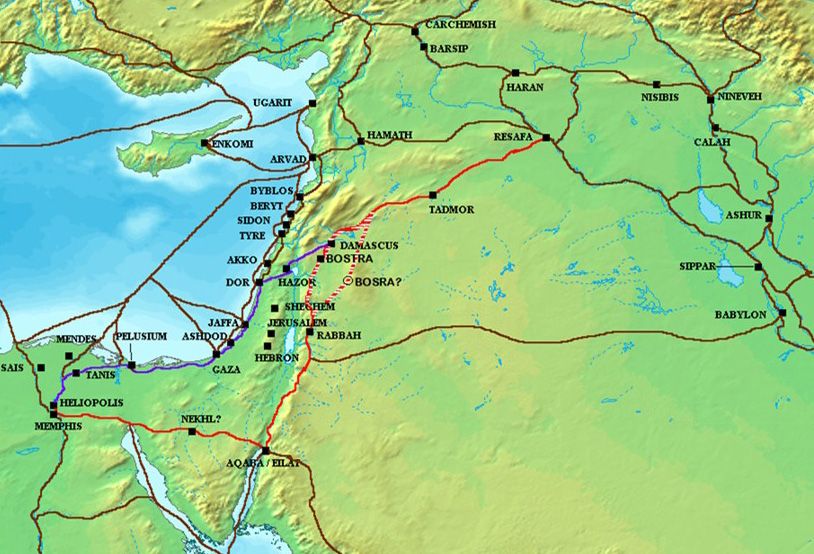
Al and I have traveled on the Kings Highway several times. It is scenic but extremely twisting and curvy as it bobs up and down the mountain range. I tend to have motion sickness, and I’m always a little queasy by the time we arrive at our destination.
History of Dana Nature Reserve
Dana Nature Reserve, now known as Dana Biosphere Reserve, is the most well-known eco-protected system in Jordan. Wadi Dana is a large, dramatic valley/gorge where until recent times, Bedouin farmers and herders lived. Dana is pronounced Thana, with the soft th as in “the.”
It is the only nature reserve that includes Jordan’s four bio-geographical zones (Mediterranean, Irano-Turanian, Saharo-Araboian, and Sudanian.) The eastern highlands see cold, rainy winters and hot, dry summers, while the western lowlands experience high temperatures and low rainfall all year long. Everything in between those boundaries enjoy a variety of climates.[2]
This area is more than a local phenomenon, however, achieving international fame. Time Magazine included it in its list of one hundred unique and extraordinary travel destinations (July 2021).
The Ata’ta Tribe
There are two villages in this area. The older Dana Village, built in the late Ottoman period (1789 – 1918) was the original town where its residents lived part of the year. The government built the newer village, Qadisiyah (cod-i-SEE-yah) higher up on the ridge in the late 1960s, and for the next several decades, the residents moved from the old to the new. Today’s population is about 6,900.
The current residents are descendants of the Ata’ta Tribe, which has occupied this part of Jordan for more than 400 years.
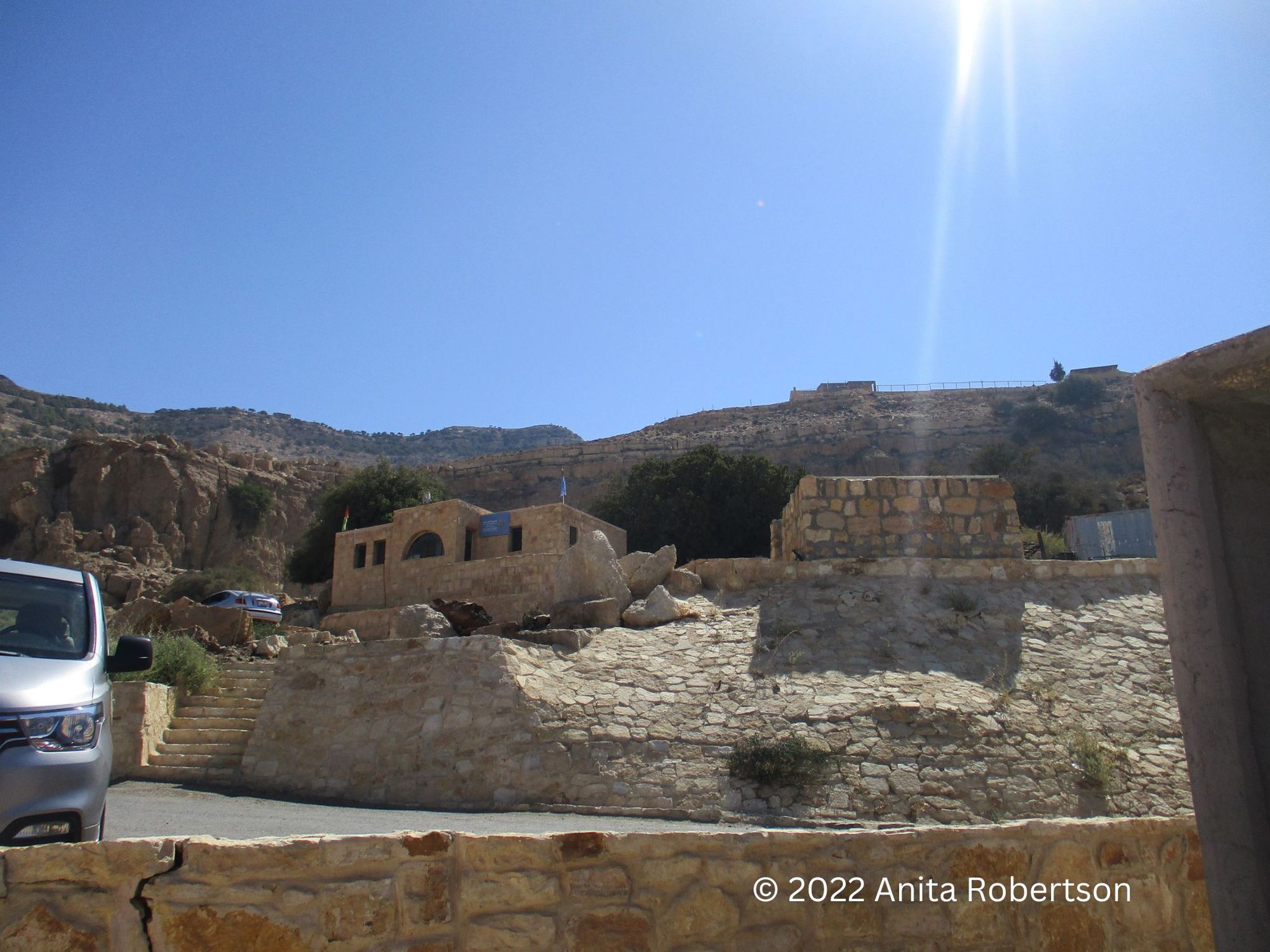
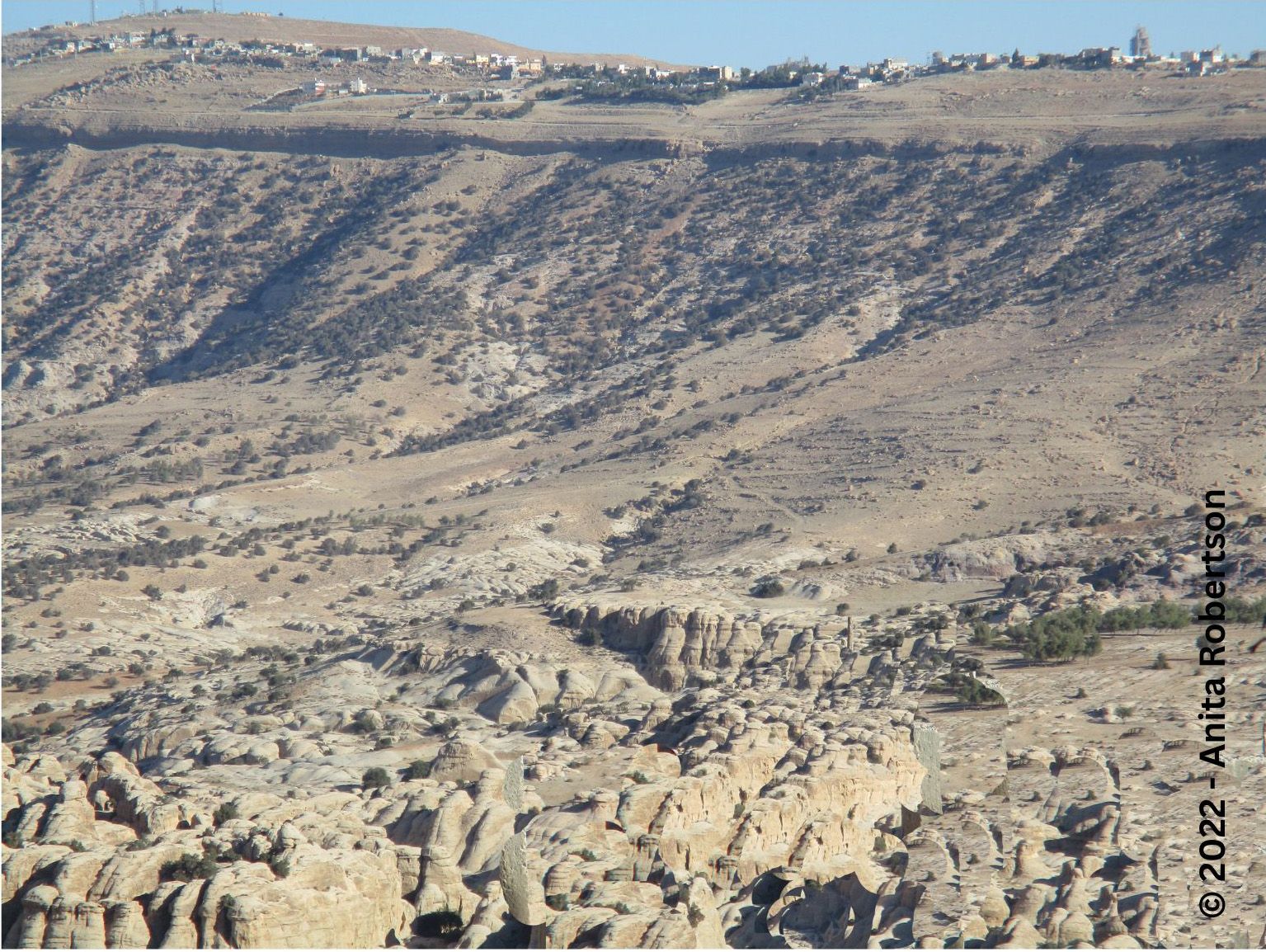
The current residents are descendants of the Ata’ta Tribe, which has occupied this part of Jordan for more than 400 years. They were Bedouin farmers and herders, spending winters in the wadi (valley) and summers close to the village and the plateau. The boundaries of their land on the north and south were Busayra and Shobak, roughly 30 miles apart.
Changing Times
As often happens, the government decided it could improve on the land use of centuries of the Bedouin management of this large property. The Jordanian Ministry of Agriculture started a reforestation project, planting trees in former pasture land. This naturally led to over-grazing. Same number of animals, less pasture. The tribe could not follow its traditional Al-Hima (protected place) method of land management that had worked for hundreds of years.
Everything changed for the people.
“In 1989, the Jordanian Government authorised [sic] the Royal Society for the Conservation of Nature (RSCN) to begin the work to create a protected, conservation area. In 1993, the Dana Nature Reserve (Dana Biosphere Reserve) was established. It … remains the largest and the best-known reserve internationally.[3]
The fallout from the government’s and RSCN’s action the was immediate.
-- It consumed 123 square miles out of the Bedouins’ land.
-- The reserve’s boundaries blocked access to some of the traditional people- and animal-movement routes, forcing long detours, and in some instances, complete blockage to areas.
-- They broke up a road connecting Dana village to the western part of their lands with access to copper and manganese mines. The breakage allowed rain and floods to destroy the road and changed the journey from eight-and-a-half miles to seventy-four-and-a-half miles. The extra time it took to travel discouraged people from cultivating the land. That was significant because the area has an abundance of water for irrigation. Today, non-tribal people, who have easier access, use that land and water.
-- The Dana villagers hunted wolves and hyenas to protect themselves and their animals. The new rules prohibited that, and those predators increased. If livestock or people were killed or injured, there was no compensation recourse.
-- Reserve rules prohibited food foraging in the reserve. Winters became hard to endure. The old ways of moving down into the wadi in winter for warmth were forbidden. Livestock died, and people had to find money to pay for fuel or tough it out in the brutal winters (14° - 46°F).
Changing from the Traditional Way of Life
For most of the twentieth century, Dana’s people thrived on its land with a “temperate climate, three abundant springs, and good grazing.”[4]But the new country of Jordan was growing and developing. Electricity, indoor plumbing, and modern technology beckoned the villagers. In the early 1980s when the new Rashdiyyeh cement factory opened its doors with promise of good wages, almost everyone moved from the primitive village to the top of the ridge into Qadisiyah.
The old village languished for more than a decade, when a dozen women from Amman discovered it. They were travelling across the country to “catalog the remnants of traditional culture.”[5]When they saw the poverty among the people of the town, the “Friends of Dana” put together a project to revitalize the area, working with the RSCN. Soon, they brought phones, electricity, plumbing, and water to the handful of people still in the village and renovated sixty-five cottages.
It didn’t take long for the RSCN to realize the tourism potential of the area. With the help of the World Bank, the UN, and now USAID, they made massive changes, turning the area into a protected nature reserve.
You now know the repercussions of that. The RSCN built Dana Guest House to attract tourists. Then it employed local farmers to grow olives, figs, grapes, medicinal herbs, and other foods. Jams, olive-oil soap, and other artisan products made their way to the market.[6]

Today's Dana
About 100 families from the original tribe have formed the Dana Cooperative in an attempt to have more of a say in what happens to their hereditary land.
Without the attention of the villagers, the stone homes fell into disrepair, and the orchards and terraces were overrun with weeds. Current restoration projects are underway to restore these buildings and gardens.
Rules are in place to prevent any more inhabitants to return as residents, but “villagers commute from Qadisiyah to farm their land and to tend their orchards and gardens. Some shepherds (usually young men) still roam the available pasture land with their flocks. There is also work in Dana’s tourism projects, for some villagers.”[7]
Locals opened small hotels and camps near the village. We stayed in one of those for six days earlier this month, Al Nawatef Camp. It was an experience unlike any we’d ever had, and I wrote extensively about it in a newsletter sent to our subscribers.
If you would like access to future newsletters detailing Al’s and my daily life, sign up for free or paid subscription. We call those who want to help fund our trips and research members of our Flight Crew. There are many benefits to those folks.
Next week, I’ll write about another location in the Abarim Mountains—the mysterious Petra.
If you want more information on the geography of Jordan, see our previous blog
[1]https://en.wikipedia.org/wiki/King%27s_Highway_(ancient). Access 10/30/2022
[2] https://danacooperative.blog/dana-nature-reserve/. Accessed 10/03/2022
[3] Lorraine Walker, “Customary Land and the Dana Nature Reserve: Impact on Traditional Life,” 09/19/2021, https://danacooperative.blog/2021/09/19/customary-land-and-the-dana-nature-reserve-impact-on-traditional-life/. Accessed 10/03/2022.
[4] https://www.roughguides.com/jordan/kings-highway/dana/. Accessed 10/03/22
[5] https://www.roughguides.com/
[6] https://www.roughguides.com/
[7] Lorraine Walker, “Customary Land and the Dana Nature Reserve: Impact on Traditional Life,”
